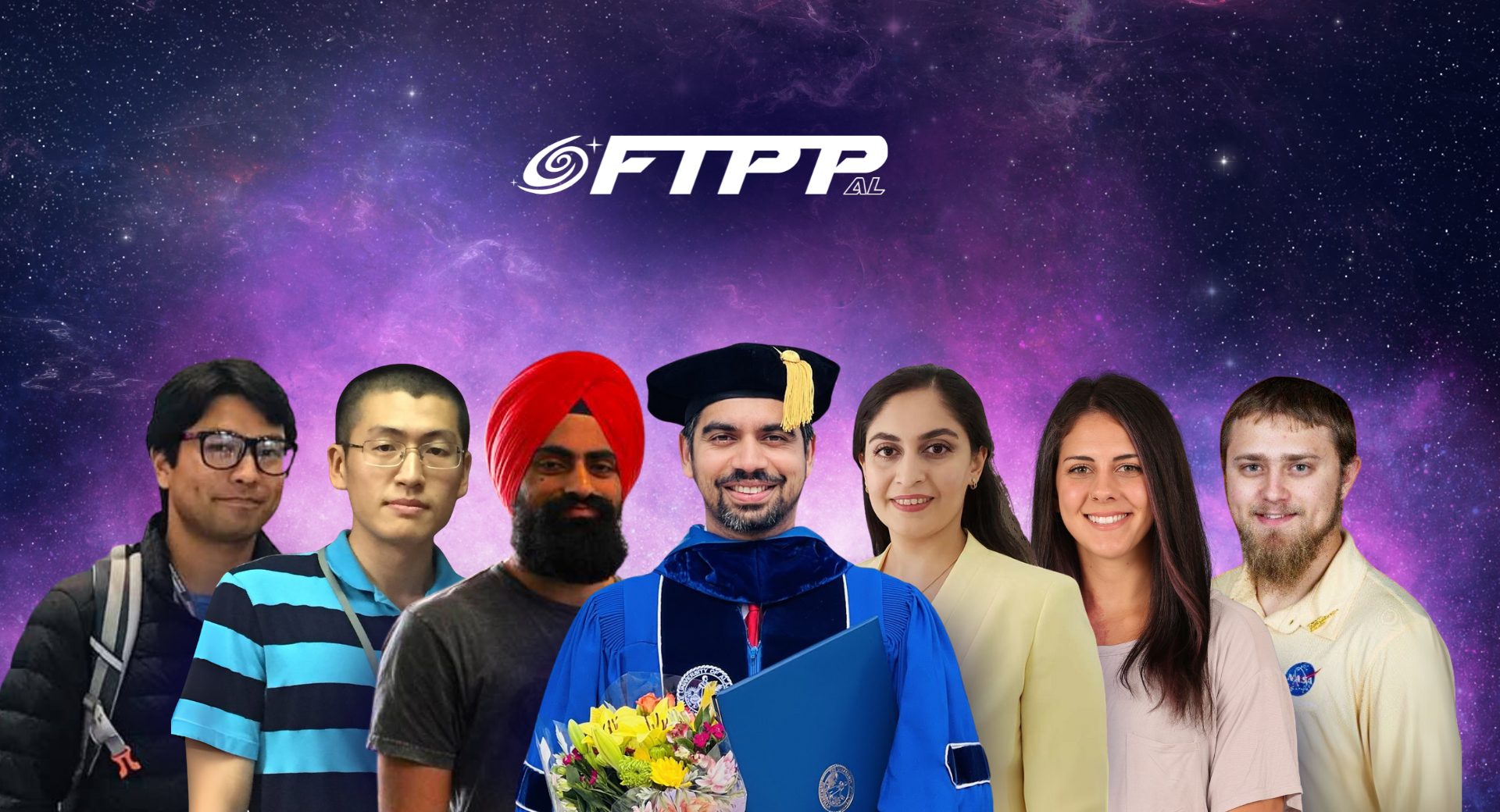UAH graduates advance in plasma careers nurtured by National Science Foundation’s vision

Grants funded by the National Science Foundation (NSF) with a goal of establishing Alabama as the center of a Southeastern plasma science and engineering powerhouse are paying dividends as doctoral graduates advance in their careers.
At The University of Alabama in Huntsville (UAH), NSF grants have supported space plasma research that has propelled seven doctoral graduates of the Department of Space Science into influential careers in plasma science.
“The coalition we have built through the vision of the NSF in investing in Alabama is ever-growing in its ability to advance degreed plasma scientists and educators into positions where they, in turn, can influence others and expand the reach and scope of the evolving plasma science and engineering field,” says Dr. Gary Zank, Aerojet Rocketdyne endowed chair of the Department of Space Science and director of UAH’s Center for Space Plasma and Aeronomic Research.
“This kind of organic career growth and corresponding broad impact and leadership across different fields and in the academic, industrial and commercial sectors was one of the visionary goals of the NSF investment, and it is beginning to pay dividends nationwide in a field identified as being of primary importance for the future.”
understanding plasma
Plasma is a ubiquitous form of energized gas present on Earth and in space. In space science, better understanding the plasmas that stream from the sun is key to developing accurate models to forecast the onset and severity of solar storms that can cripple delicate electronics on Earth, in aviation and aboard vital spacecraft. That’s the central mission of NASA’s Parker Solar Probe mission, a spacecraft that UAH is heavily involved with that launched in 2018.
As UAH doctoral students, the work of the seven graduates was directly or indirectly funded by Alabama’s $20 million Future Technologies & enabling Plasma Processes (FTPP) and Connecting the Plasma Universe to Plasma Technology in Alabama (CPU2AL), a predecessor $20 million grant. Both grants result from NSF Established Program to Stimulate Competitive Research (EPSCoR) investments in the state.
The seven graduates:
- Dr. Parisa Mostafavi – Senior research scientist I, Space Exploration Sector, Johns Hopkins University Applied Physics Laboratory. New England Science & Sailing Foundation awardee; awarded Outstanding College of Science Graduate Research Associate, 2019; American Geophysical Union Scarf Award, 2020, globally awarded annually for outstanding doctoral thesis. Doctoral degree in 2019.
- Dr. Talwinder Singh – Assistant professor, Department of Physics & Astronomy, Georgia State University, Atlanta. Doctoral degree in 2020.
- Dr. Senbei Du – Research scientist, Boston University. Doctoral degree in 2020.
- Dr. Bishwas L. Shrestha – Research scientist, Princeton University. Doctoral degree in 2021.
- Dr. Nicolas Donders – Postdoctoral research associate, U.S. Airforce Research Lab. Doctoral degree in 2023.
- Dr. Katherine Davidson – Postdoctoral scholar, Boston University. Doctoral degree in 2025.
- Dr. Krishna Khanal – Postdoctoral researcher, UAH. Doctoral degree in 2025.
Except for Dr. Singh, all were students of Dr. Zank. Dr. Singh was a student of Dr. Nikolai Pogorelov, distinguished professor of Space Science. On average, the Department of Space Science graduates three doctoral students a year.
“Both CPU2AL and FTPP funded many of these students directly, or if not then they worked on projects closely related to both since their supervisors and mentors were engaged with these activities, and all of them were engaged with or attended CPU2AL/FTPP activities related to workforce development,” says Dr. Zank.
“Consequently, the students not only received excellent technical backgrounds that opened up a wide variety of opportunities for them, but they also had the soft skills that are necessary to build a successful career in science and technology, whether in academic or research environments,” he says. “All are making a very positive and critical contribution, in areas as diverse as spectral imaging for in-space rocket testing, or the development of artificial intelligence and machine learning techniques for forecasting space weather, or in leading aspects of the Parker Solar Probe mission.”
Managed by UAH and directed by Dr. Zank, the two consecutive statewide NSF-funded grants pull together a consortium of nine Alabama universities and a research corporation to transition plasma science and engineering research into beneficial commercial applications, develop an Alabama-educated plasma workforce and establish Alabama as a Southeastern regional hub for plasma science expertise.
“All of these were outstanding students who engaged in the EPSCoR programs in various ways, whether through direct support, or indirectly through my support and working on projects related to the EPSCoR grants,” says Dr. Zank. “None had any challenges in finding positions and all have moved into scientific leadership roles except for the two who just graduated in fall 2024.”

